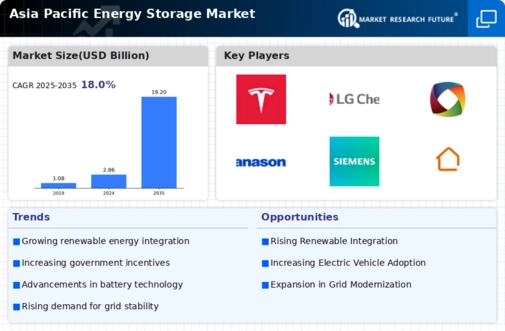Market Trends
Key Emerging Trends in the Asia Pacific Energy Storage Market
The Asia Pacific Energy Storage Market has witnessed significant growth in recent years, driven by the increasing demand for reliable and sustainable energy solutions. Market share positioning strategies play a crucial role in shaping the competitive landscape of this dynamic sector. Several key factors contribute to the diverse strategies adopted by companies to gain a strong foothold in the market.
First and foremost, innovation stands out as a cornerstone for market share positioning in the Asia Pacific Energy Storage Market. Companies that invest in research and development to create cutting-edge technologies and solutions often gain a competitive advantage. By offering innovative and efficient energy storage solutions, these companies can cater to the evolving needs of the market, attracting both consumers and businesses looking for state-of-the-art products.
Moreover, strategic partnerships and collaborations have emerged as pivotal tools for market share expansion in the energy storage sector. Companies in the Asia Pacific region are increasingly forming alliances with other industry players, utilities, and government bodies to leverage combined expertise and resources. These collaborations not only enhance research capabilities but also facilitate the development of comprehensive energy storage solutions that can address the multifaceted challenges of the region's diverse energy landscape.
In addition, market players are focusing on establishing a robust and widespread distribution network to enhance their market penetration. The Asia Pacific region comprises diverse markets with varying energy needs and regulatory frameworks. Companies that can efficiently navigate these complexities and establish a strong presence across different geographies are better positioned to capture a larger market share. Building strategic alliances with local distributors and understanding the unique requirements of each market segment are key elements in successfully implementing this approach.
Furthermore, a customer-centric approach is gaining prominence in the Asia Pacific Energy Storage Market. Companies are increasingly recognizing the importance of understanding customer needs and tailoring their products and services accordingly. Customization and flexibility in energy storage solutions, along with attentive customer support, contribute to enhanced customer satisfaction. Satisfied customers not only drive repeat business but also become brand advocates, promoting the company's market share growth through positive word-of-mouth and referrals.
Government policies and incentives also play a pivotal role in shaping market share dynamics in the Asia Pacific Energy Storage Market. Companies that actively engage with and adapt to evolving regulatory landscapes can gain a competitive edge. By aligning their strategies with government initiatives promoting renewable energy and energy storage, companies position themselves favorably to capitalize on the growing demand for sustainable energy solutions.
Furthermore, a commitment to sustainability and environmental responsibility is becoming increasingly important in market share positioning. As awareness of climate change and environmental impact grows, consumers and businesses are placing a premium on eco-friendly energy storage solutions. Companies that prioritize sustainability in their product development, manufacturing processes, and overall business practices are likely to attract environmentally conscious customers and gain a competitive advantage in the market.
In conclusion, the Asia Pacific Energy Storage Market is witnessing intense competition, and market share positioning strategies are crucial for companies aiming to thrive in this dynamic landscape. Innovation, strategic partnerships, widespread distribution networks, customer-centric approaches, alignment with government policies, and a commitment to sustainability are key elements that contribute to a successful market share strategy. Companies that can effectively integrate these elements into their business models are poised to capture a significant share of the burgeoning energy storage market in the Asia Pacific region.














Leave a Comment